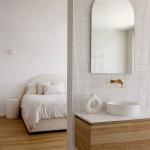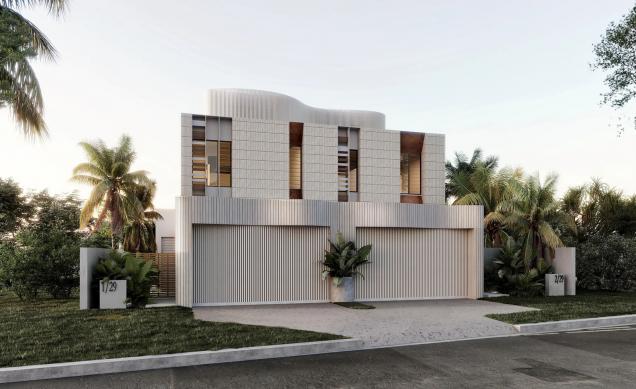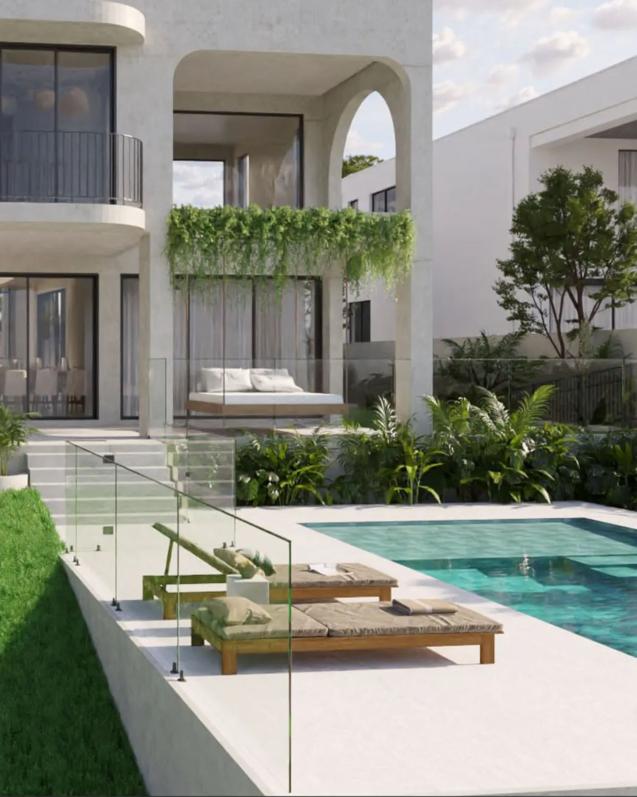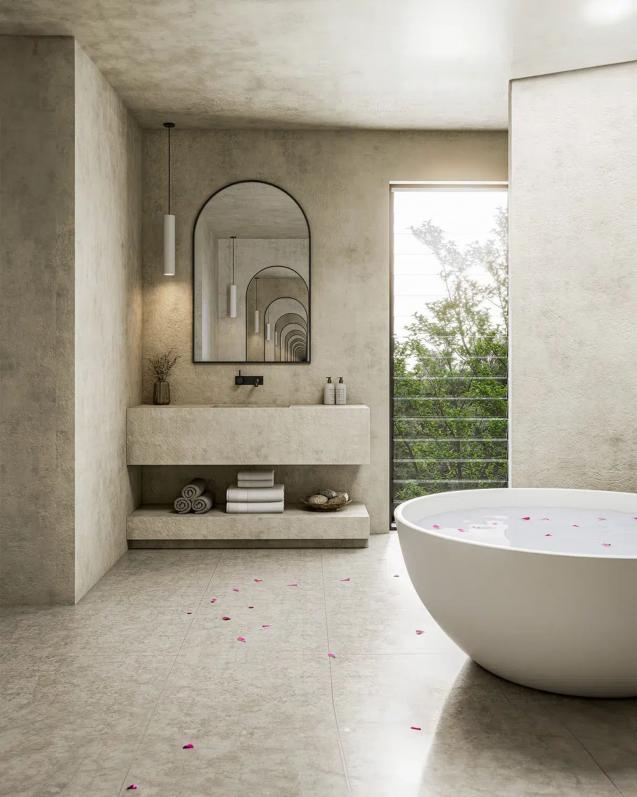
Determining the Right Size for Your Family Home
By Unique Built|January 19, 2024
You're not just building a house; you're crafting a sanctuary where memories will unfold and stories will be written. It's where the echoes of laughter will fill the halls, and the warmth of love will seep into every corner. But before laying the first brick or drafting the initial blueprint, a quintessential question beckons your attention — what is the ideal house size and layout to raise a family?
In the heart of Australia, where the sun kisses the ocean and the breeze carries whispers of adventure, your home is more than a structure; it's a backdrop to your family's journey. It's where your little ones take their first steps, where celebrations are held, and where you unwind after a day's hustle. But how do you ensure this space adapts to your family's evolving tapestry of needs?
You seek not just answers but insights that stem from a profound understanding of Australian lifestyles, local nuances, and a pulse on global trends. As experts in the realm of luxury custom-designed homes, we bring you a blend of information, assurance, and an infectious passion for creating spaces that resonate with the unique rhythm of your family's heartbeat.
Assessing Your Family’s Unique Needs
When you’re on the cusp of creating a space where your family's future will unfold, comprehending the intricate tapestry of your family dynamics isn’t just important, it's crucial. You see, a home isn’t just a static entity; it's a dynamic environment that ebbs and flows with the rhythms of your life. The arrival of a new child, the teenage years demanding more privacy, or the golden years when the nest begins to empty, each phase whispers a different need.
Now, think about the space you’ll need for these unfolding chapters. For the little ones, an open play area might be essential, while teenagers might appreciate a room of their own to foster independence. And let’s not forget the aging relatives who might come to stay; a guest room with easy bathroom access can make all the difference. It’s this foresight, this anticipation of change, that can transform a house into a forever home.
Here’s where the quintessential Australian love for space plays its part. Picture this — not the walls and the tiles, but the moments you'll live here. The lively family gatherings in spacious open-plan living areas, laughter spilling out into alfresco dining spaces, Sunday barbecues under the clear blue sky. It’s not just about square meters; it’s about the seamless flow from indoors to outdoors that’s so inherent to the Australian way of life.
Balancing communal and private spaces is an art. Your home should be a haven where family bonds are nurtured in shared spaces, but individual personalities are respected in private
sanctuaries. It's not just about having rooms; it's about crafting spaces that respond to your family's pulse.The Australian Take on Ideal House Size. In Australia, the concept of the 'ideal' house size is evolving. Statistically, the average Australian home has been gradually shrinking from its peak in the 2000s. Today, the trend is inching closer to global norms, yet still remains on the larger side compared to many countries.
But what does this mean for you and your family?
This shift towards more modestly-sized homes isn't just about following a trend; it's about a deeper understanding of what truly enhances family life. Smaller, more sustainable homes are not just a nod to environmental responsibility; they're a catalyst for closer family interactions. Imagine a home that's not just a place to live, but a space that encourages togetherness, conversation, and shared experiences.
Opting for a right-sized home brings a myriad of financial benefits, too. Smaller homes generally equate to lower building and maintenance costs, meaning you can invest more in quality, sustainable materials and innovative design features that truly make your house a home.
The environmental advantages are equally compelling. A right-sized home reduces your carbon footprint significantly. Sustainable homes utilise resources more efficiently, have less waste, and often incorporate renewable energy sources. All these factors contribute to a healthier environment inside and out – something you can feel good about for generations to come.
Layout Essentials for Harmonious Family Living
Understanding the psychology of space is pivotal in creating a home that not only looks stunning but feels right. You see, the layout of your home does more than just dictate where your furniture goes; it subtly influences your family dynamics. Get it right, and you'll foster stronger bonds while respecting each individual's need for privacy.
The ideal layout for nurturing family bonds combines open communal areas with well-thought-out private spaces. Consider the heart of the home: the kitchen. An open-plan design invites interaction, allowing you to cook while your kids do their homework at the breakfast bar or your partner sips on a cup of coffee. Yet, just as important are those private nooks—personal bedrooms, a study, or a quiet reading corner, offering solace when needed.
Now, let's talk about the quintessential Australian lifestyle: the love for indoor-outdoor living. Blurring the lines between inside and outside isn't just a design trend; it's a way of life down under. Integrating features like large sliding doors or covered alfresco dining areas means your family isn't confined to the indoors. It provides a seamless transition to the outdoors, where many a family memory can be made, from Sunday barbecues to backyard cricket.
But remember, a successful layout goes beyond the blueprint; it's about creating a harmonious balance between shared experiences and individual expression. As experts in crafting luxury homes, we understand this balance and are dedicated to designing spaces that are not just houses, but true family homes tailored to your unique lifestyle.
Flexibility is Key: Adaptable Living Spaces
In today's fast-paced world, your home must be as adaptable as you are. It's not just a static backdrop for life's moments but a dynamic space that evolves with your family's needs. That's where the concept of flexible living spaces comes in, and it's rapidly gaining traction right here in Australia.
Imagine a home that grows with you. When your toddler needs a playroom, it's there. Then, as they grow, the space seamlessly transitions into a study area, and later, a teenage retreat. That's the power of adaptable living spaces. It's not about merely using a room for multiple purposes; it's about smart design that anticipates change and accommodates it with minimal disruption.
So, how do you incorporate this flexibility into your home design? It starts with foresight. Think about not just your family's current requirements but also what you might need five, ten, or even fifteen years down the line. A room with movable partitions can morph from an open-plan play area to a private study space. Built-in storage solutions can hide away toys, books, or hobby supplies, depending on the room's function at any given time.
But it's not just about the inside. Australian homes are celebrated for their blend of indoor and outdoor living. Your alfresco dining area might double as an outdoor lounge with the simple addition of comfortable seating and weather-proof textiles. It's about creating spaces that are not confined to a single purpose but are instead fluid and ever-changing, just like your family's needs.
Consider, for instance, convertible rooms equipped with wall beds that fold away when not in use, instantly transforming a guest bedroom into a home office or craft room. Or multi-functional areas that can serve as a dining room during meal times and study space at other times, with cleverly designed furniture that adapts to the occasion.
Building Regulations and Codes in Australia: Navigating the Essentials
The journey of building your family home is exhilarating, yet it's crucial to navigate the intricate web of building regulations and codes in Australia.
Why?
Well, these regulations are not just bureaucratic red tape. They are the guardians of your family's safety and the pillars that uphold the value of your investment.
Understanding the Basics
First off, you need to get familiar with the National Construction Code (NCC), which sets the minimum required standards for the construction of new buildings. These codes ensure that your home isn’t just visually appealing, but also structurally sound, energy-efficient, and safe.
The Importance of Compliance
Now, why should you care about compliance? Simply put, it's about safety and investment. Adhering to these codes means your home is built to withstand the unique Australian climate and environmental conditions. It's also about peace of mind, knowing that every corner of your sanctuary meets stringent safety standards. Plus, a compliant home is a solid investment. Should you ever decide to sell, a home that ticks all the regulatory boxes is far more attractive to potential buyers.
Unique Built: Your Compliance Champions
This is where Unique Built strides in, your partner in turning the vision of your dream home into a reality that exceeds standards. Our expertise isn’t just about creating luxurious living spaces; it's deeply rooted in our comprehensive knowledge of the Australian building landscape.
We don't just aim for compliance; we aim for excellence. Our team is abreast of the latest updates in building codes and regulations. This means that when you choose us, you're not just getting a home that meets the standards – you're getting a home that sets them.
In the heart of Australia, where the sun kisses the ocean and the breeze carries whispers of adventure, your home is more than a structure; it's a backdrop to your family's journey. It's where your little ones take their first steps, where celebrations are held, and where you unwind after a day's hustle. But how do you ensure this space adapts to your family's evolving tapestry of needs?
You seek not just answers but insights that stem from a profound understanding of Australian lifestyles, local nuances, and a pulse on global trends. As experts in the realm of luxury custom-designed homes, we bring you a blend of information, assurance, and an infectious passion for creating spaces that resonate with the unique rhythm of your family's heartbeat.
Assessing Your Family’s Unique Needs
When you’re on the cusp of creating a space where your family's future will unfold, comprehending the intricate tapestry of your family dynamics isn’t just important, it's crucial. You see, a home isn’t just a static entity; it's a dynamic environment that ebbs and flows with the rhythms of your life. The arrival of a new child, the teenage years demanding more privacy, or the golden years when the nest begins to empty, each phase whispers a different need.
Now, think about the space you’ll need for these unfolding chapters. For the little ones, an open play area might be essential, while teenagers might appreciate a room of their own to foster independence. And let’s not forget the aging relatives who might come to stay; a guest room with easy bathroom access can make all the difference. It’s this foresight, this anticipation of change, that can transform a house into a forever home.
Here’s where the quintessential Australian love for space plays its part. Picture this — not the walls and the tiles, but the moments you'll live here. The lively family gatherings in spacious open-plan living areas, laughter spilling out into alfresco dining spaces, Sunday barbecues under the clear blue sky. It’s not just about square meters; it’s about the seamless flow from indoors to outdoors that’s so inherent to the Australian way of life.
Balancing communal and private spaces is an art. Your home should be a haven where family bonds are nurtured in shared spaces, but individual personalities are respected in private
sanctuaries. It's not just about having rooms; it's about crafting spaces that respond to your family's pulse.The Australian Take on Ideal House Size. In Australia, the concept of the 'ideal' house size is evolving. Statistically, the average Australian home has been gradually shrinking from its peak in the 2000s. Today, the trend is inching closer to global norms, yet still remains on the larger side compared to many countries.
But what does this mean for you and your family?
This shift towards more modestly-sized homes isn't just about following a trend; it's about a deeper understanding of what truly enhances family life. Smaller, more sustainable homes are not just a nod to environmental responsibility; they're a catalyst for closer family interactions. Imagine a home that's not just a place to live, but a space that encourages togetherness, conversation, and shared experiences.
Opting for a right-sized home brings a myriad of financial benefits, too. Smaller homes generally equate to lower building and maintenance costs, meaning you can invest more in quality, sustainable materials and innovative design features that truly make your house a home.
The environmental advantages are equally compelling. A right-sized home reduces your carbon footprint significantly. Sustainable homes utilise resources more efficiently, have less waste, and often incorporate renewable energy sources. All these factors contribute to a healthier environment inside and out – something you can feel good about for generations to come.
Layout Essentials for Harmonious Family Living
Understanding the psychology of space is pivotal in creating a home that not only looks stunning but feels right. You see, the layout of your home does more than just dictate where your furniture goes; it subtly influences your family dynamics. Get it right, and you'll foster stronger bonds while respecting each individual's need for privacy.
The ideal layout for nurturing family bonds combines open communal areas with well-thought-out private spaces. Consider the heart of the home: the kitchen. An open-plan design invites interaction, allowing you to cook while your kids do their homework at the breakfast bar or your partner sips on a cup of coffee. Yet, just as important are those private nooks—personal bedrooms, a study, or a quiet reading corner, offering solace when needed.
Now, let's talk about the quintessential Australian lifestyle: the love for indoor-outdoor living. Blurring the lines between inside and outside isn't just a design trend; it's a way of life down under. Integrating features like large sliding doors or covered alfresco dining areas means your family isn't confined to the indoors. It provides a seamless transition to the outdoors, where many a family memory can be made, from Sunday barbecues to backyard cricket.
But remember, a successful layout goes beyond the blueprint; it's about creating a harmonious balance between shared experiences and individual expression. As experts in crafting luxury homes, we understand this balance and are dedicated to designing spaces that are not just houses, but true family homes tailored to your unique lifestyle.
Flexibility is Key: Adaptable Living Spaces
In today's fast-paced world, your home must be as adaptable as you are. It's not just a static backdrop for life's moments but a dynamic space that evolves with your family's needs. That's where the concept of flexible living spaces comes in, and it's rapidly gaining traction right here in Australia.
Imagine a home that grows with you. When your toddler needs a playroom, it's there. Then, as they grow, the space seamlessly transitions into a study area, and later, a teenage retreat. That's the power of adaptable living spaces. It's not about merely using a room for multiple purposes; it's about smart design that anticipates change and accommodates it with minimal disruption.
So, how do you incorporate this flexibility into your home design? It starts with foresight. Think about not just your family's current requirements but also what you might need five, ten, or even fifteen years down the line. A room with movable partitions can morph from an open-plan play area to a private study space. Built-in storage solutions can hide away toys, books, or hobby supplies, depending on the room's function at any given time.
But it's not just about the inside. Australian homes are celebrated for their blend of indoor and outdoor living. Your alfresco dining area might double as an outdoor lounge with the simple addition of comfortable seating and weather-proof textiles. It's about creating spaces that are not confined to a single purpose but are instead fluid and ever-changing, just like your family's needs.
Consider, for instance, convertible rooms equipped with wall beds that fold away when not in use, instantly transforming a guest bedroom into a home office or craft room. Or multi-functional areas that can serve as a dining room during meal times and study space at other times, with cleverly designed furniture that adapts to the occasion.
Building Regulations and Codes in Australia: Navigating the Essentials
The journey of building your family home is exhilarating, yet it's crucial to navigate the intricate web of building regulations and codes in Australia.
Why?
Well, these regulations are not just bureaucratic red tape. They are the guardians of your family's safety and the pillars that uphold the value of your investment.
Understanding the Basics
First off, you need to get familiar with the National Construction Code (NCC), which sets the minimum required standards for the construction of new buildings. These codes ensure that your home isn’t just visually appealing, but also structurally sound, energy-efficient, and safe.
The Importance of Compliance
Now, why should you care about compliance? Simply put, it's about safety and investment. Adhering to these codes means your home is built to withstand the unique Australian climate and environmental conditions. It's also about peace of mind, knowing that every corner of your sanctuary meets stringent safety standards. Plus, a compliant home is a solid investment. Should you ever decide to sell, a home that ticks all the regulatory boxes is far more attractive to potential buyers.
Unique Built: Your Compliance Champions
This is where Unique Built strides in, your partner in turning the vision of your dream home into a reality that exceeds standards. Our expertise isn’t just about creating luxurious living spaces; it's deeply rooted in our comprehensive knowledge of the Australian building landscape.
We don't just aim for compliance; we aim for excellence. Our team is abreast of the latest updates in building codes and regulations. This means that when you choose us, you're not just getting a home that meets the standards – you're getting a home that sets them.



